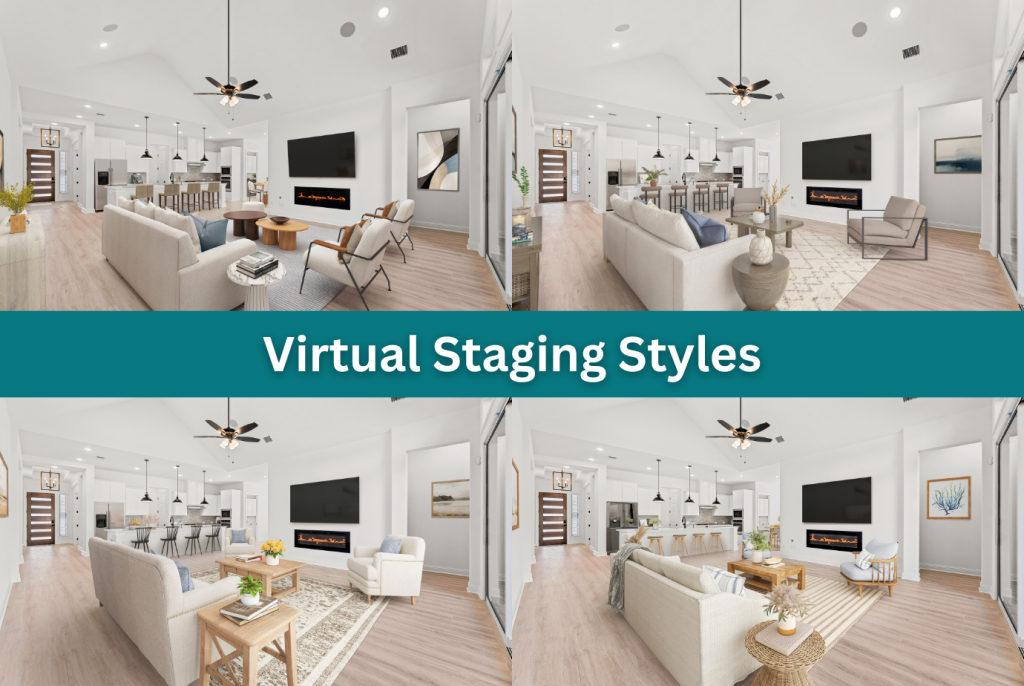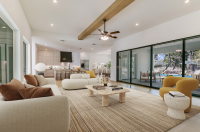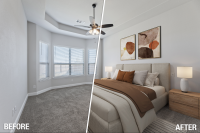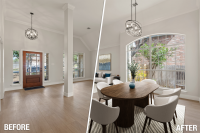Staging a Home Virtually vs Traditionally: Which is Right for Your Listing?
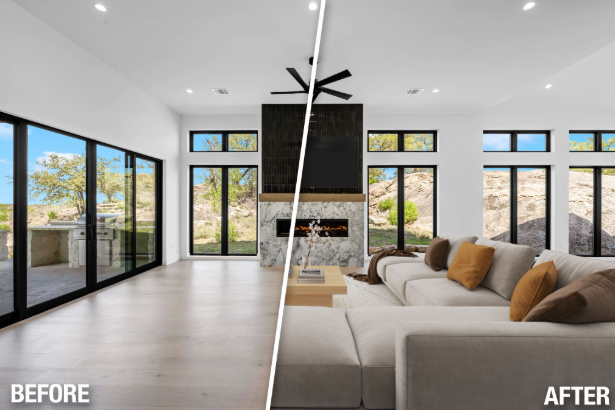
When marketing real estate listings, staging a home can significantly impact its appeal and sales potential. In fact, staged homes often sell faster and for higher prices. But with options like traditional and virtual staging, how do you know which is the right fit for your listing? Let’s dive into the pros and cons of each to help you make an informed decision when marketing your next property listing.
Traditional Staging: The Physical Experience
When traditionally staging a home, you’ll need to physically furnish and decorate it to showcase its best features. This includes selecting decor, renting furniture, and arranging everything to create an inviting atmosphere.
Pros:
- Immersive Experience: Traditional staging allows interested buyers to physically experience the space and its potential.
- Highlighting Features: It can effectively highlight architectural details, the flow of the home, and the possible furniture arrangements.
- Luxury Appeal: A well-staged home can exude a sense of luxury and sophistication, attracting high-end buyers.
Cons:
- High Cost: Rental fees, staging services, and moving expenses can be significant.
- Time-Consuming: The process involves planning, scheduling, and physical labor, which can delay listing timelines.
- Logistical Challenges: Moving furniture and coordinating schedules can be complex, especially for distant or harder-to-reach properties.
- Lack of Flexibility: When physically staging a home, you’re limited to the style chosen, which may not appeal to everyone viewing it.
Virtual Staging: The Digital Transformation
Virtually staging a home involves using digital tools to add furniture, decor, and even renovations to existing property photos. This allows you to showcase a home’s full potential without physically altering the space.
Pros:
- Cost-Effective: Virtual staging is significantly cheaper than traditional staging, making it accessible for various budgets.
- Fast Turnaround: Virtual staging can be completed and altered quickly, allowing for faster listing times.
- Versatile Design: You can showcase a variety of design styles and furniture options to appeal to diverse tastes.
- Digital Enhancements: During the virtual staging process, unwanted items can easily be removed, and minor repairs can be digitally made.
Cons:
- Lack of Physical Experience: Buyers cannot physically interact with the virtually staged space, which can be a drawback for some.
Virtual staging can go wrong when done incorrectly, such as using poor-quality photos or creating unrealistic expectations. That’s why Square Foot Productions requests high-quality images (if not booked through Square Foot Photography) and uses photo-realistic digital furniture that’s strategically placed to enhance the space. We also always include a disclaimer that our images are virtually staged to maintain compliance with most MLS platforms.
Choosing the Right Staging Method
So, which option is best when staging a home for your listing? That ultimately depends on your listing, budget, and time constraints. Consider the following points when deciding to use traditional or virtual staging:
- Property Type and Target Audience: Consider the type of property and the demographics of potential buyers you want to attract.
- Property Condition and Location: Assess the property’s condition and location to determine if virtual or traditional staging is more practical and cost-effective to achieve your goals.
- Budget and Time Constraints: Evaluate your budget and timeline to determine which option is more feasible.
- Desired Aesthetic and Marketing Goals: Align the staging style with your overall marketing strategy. This could impact which staging services are available to you based on whether or not they have your preferred style.
- Combination Staging: Consider combining both methods for optimal results (e.g., traditional staging for key areas and virtual staging for the remaining spaces).
In most cases, virtual staging is an excellent option to effectively market a property to a wide range of buyers and secure a faster sale.
Ultimately, the best staging method depends on your specific listing needs. Virtual staging offers a cost-effective and efficient solution for most properties, while traditional staging provides a tangible experience for potential buyers. By carefully considering the factors discussed above, you can choose the staging method that will maximize your property’s appeal and attract the right buyers.
Ready to elevate your listings? Contact us today and book our virtual staging services for your next listing!

